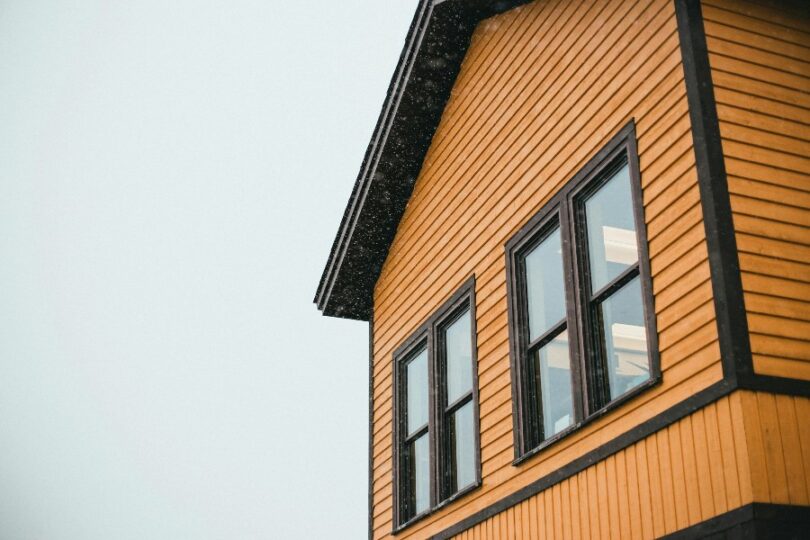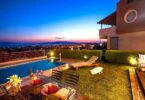Enhancing your home’s curb appeal goes beyond mere aesthetics—it’s a strategic investment that yields both immediate satisfaction and long-term dividends. Among the many renovation projects homeowners undertake, upgrading your home’s siding emerges as a powerful solution that offers a multitude of benefits. Let’s delve into ten compelling reasons to prioritize this transformative upgrade.
Elevated Curb Appeal
Boost in Aesthetic Value
A fresh, well-maintained exterior is a source of pride for homeowners and a welcoming sight for visitors. New siding can revitalize your home’s facade, creating an inviting and visually appealing entrance that leaves a lasting impression. Rejuvenating the overall look and feel of your property results in an instant uplift in curb appeal and aesthetic enjoyment.
Increased Marketability
While pleasing current homeowners is a priority, new siding also significantly enhances your property’s marketability for potential buyers. A visually appealing exterior is often the first thing that captures a buyer’s attention, setting the tone for the entire viewing experience. With a fresh, well-maintained siding upgrade, your home will stand out in the market, making it more appealing to prospective purchasers.
Customization Options
Siding provides numerous options to harmonize with your home’s architectural style and personal preferences. From sleek modern designs to classic architectural motifs, you can choose materials such as vinyl, fiber cement, and engineered wood in a spectrum of colors and textures.
This customization enables you to create a personalized exterior that reflects your unique tastes and complements your property’s overall aesthetic. Options such as James Hardie plank lap siding, shingle siding, shake siding, lap siding, and vertical siding offer versatility to add contrast and depth to your home’s facade.

Increased Durability and Protection
Weather Resistance
From blistering sun to driving rain and gusty winds, the elements can take a toll on your home’s exterior over time. Investing in weather-resistant siding materials like fiber cement or engineered wood ensures that your home remains well-protected against nature’s harshest conditions. These durable options are designed to withstand extreme temperatures, moisture, and wind, safeguarding your property from costly damage and premature aging.
In areas like Naperville, Illinois, where severe weather conditions like harsh winters and heavy rainfall are common, the need for durable and visually appealing siding is paramount. To maintain a fresh and attractive appearance while withstanding the elements, homeowners in Naperville should seek out siding repair Naperville services. These services can address any damage or wear and tear, ensuring your home remains beautiful and protected for years to come.
Pest Resistance
Certain siding materials, such as vinyl and fiber cement, are engineered to be impervious to pests like termites, carpenter ants, and woodpeckers. This resilience not only safeguards your home’s structural integrity but also prevents costly repairs and potential infestations that can compromise your living environment. With pest-resistant siding, you can enjoy peace of mind knowing that your home is well-fortified against unwanted intruders.
Reduced Maintenance
Compared to traditional wood siding, which requires regular painting, staining, and sealing, many modern siding options like vinyl and engineered wood are virtually maintenance-free.
These materials boast improved resistance to fading, cracking, and warping, ensuring that your exterior looks fresh and vibrant for years to come with minimal upkeep required. This low-maintenance feature allows you to enjoy a beautiful exterior without the hassle and expense of frequent maintenance tasks.
Improved Energy Efficiency
Insulation Advances
Gone are the days when siding served merely as a decorative shell. Modern siding materials boast advanced insulative properties, effectively minimizing heat loss during winter months and preventing excessive heat gain in the summer. This thermal regulation not only enhances indoor comfort but also leads to direct cost savings by reducing the workload on your HVAC system.
Lower Utility Bills
By improving your home’s insulation and reducing the strain on your heating and cooling systems, energy-efficient siding can translate to significant reductions in your monthly utility bills. According to the U.S. Department of Energy, properly insulated siding can save homeowners up to 20% annually on heating and cooling costs, depending on the climate and the specific materials used.
Sustainable Living
As environmental consciousness continues to grow, many leading siding manufacturers are offering eco-friendly options made from recycled materials or engineered to minimize environmental impact throughout their lifecycle. By upgrading to these sustainable solutions, you can reduce your carbon footprint while enjoying the benefits of modern siding technology, contributing to a greener future for your community and the planet.
Enhanced Structural Integrity
In addition to its aesthetic and protective qualities, new siding can fortify your home’s structural framework. When installed correctly, siding acts as an additional barrier against moisture intrusion, helping to prevent mold growth, wood rot, and other structural issues that can compromise the integrity of your home over time.
By controlling moisture and providing an extra layer of defense, upgraded siding reinforces your home’s structural integrity, ensuring a solid foundation for years to come.
Noise Reduction
While often overlooked, noise reduction is another significant advantage of upgrading your siding. Insulated siding materials like vinyl and fiber cement excel at dampening external sounds, creating a more peaceful and tranquil living environment.
Whether it’s noisy neighbors, nearby traffic, or outdoor activities, these materials can effectively buffer unwanted noise, allowing you to enjoy a serene oasis within your home’s walls.
Warranty Advantages
When investing in new siding, you’re not just purchasing materials—you’re also securing valuable warranty protection. Many leading siding manufacturers offer extensive warranties, some spanning 25 years or more, providing homeowners with long-term peace of mind.
These warranties often cover defects in materials and workmanship, ensuring that your investment is safeguarded against premature failure or unexpected issues. Additionally, certain warranties may be transferable to future owners, adding resale value to your property and providing potential buyers with the same level of protection.
Government and Insurance Incentives
To encourage energy-efficient home improvements, various government programs and insurance providers offer incentives for upgrading to insulated siding. On the government front, federal and state tax credits may be available, depending on your location and the specific siding materials used. These tax credits can significantly offset the upfront costs of your siding upgrade, making it a more accessible and financially attractive investment.
Additionally, some insurance companies recognize the protective benefits of new siding and offer discounts on homeowners’ insurance premiums. By enhancing your home’s resistance to weather, pests, and other potential threats, insured siding can be viewed as a risk-mitigating factor, leading to reduced premiums and long-term savings for responsible homeowners.
Return on Investment (ROI)
While the upfront costs of siding replacement can be substantial, the long-term benefits often outweigh the initial investment. According to Remodeling Magazine’s Cost vs. Value Report, homeowners can recoup an average of 68% of the cost when reselling their home after a siding upgrade. This impressive return on investment (ROI) is attributed to the enhanced curb appeal, energy savings, and reduced maintenance costs that new siding provides.
Beyond the direct financial returns, the intangible benefits of a siding upgrade, such as improved comfort, increased protection, and a heightened sense of pride in your home, contribute to an excellent overall ROI. As a seasoned real estate investor emphasizes, New siding is one of the smartest investments a homeowner can make—it adds value, improves efficiency, and protects your most significant asset.
Frequently Asked Questions
1. How long will upgraded siding typically last, and what
The lifespan of new siding can vary depending on the material, but most modern options are designed to last for several decades with minimal maintenance. Vinyl siding, for instance, can last up to 40 years, while fiber cement siding can endure for 50 years or more. Regular cleaning and inspections are typically the only maintenance required.
2. What is the most durable material available for residential siding, and how do I choose the best one for my climate?
Fiber cement siding is widely regarded as the most durable option, offering superior resistance to weather, pests, and fire. However, the best choice ultimately depends on your climate. For example, vinyl siding performs well in moderate climates, while engineered wood may be preferred in areas with extreme temperature fluctuations.
3. Can upgrading my home’s siding improve my property’s energy efficiency, and will it qualify for any incentives?
Absolutely! Insulated siding materials like vinyl and fiber cement can significantly enhance your home’s energy efficiency, leading to lower utility bills. Additionally, many state and federal programs offer tax credits or rebates for energy-efficient home improvements, making the upgrade even more cost-effective.
Photo by Erik Mclean.








